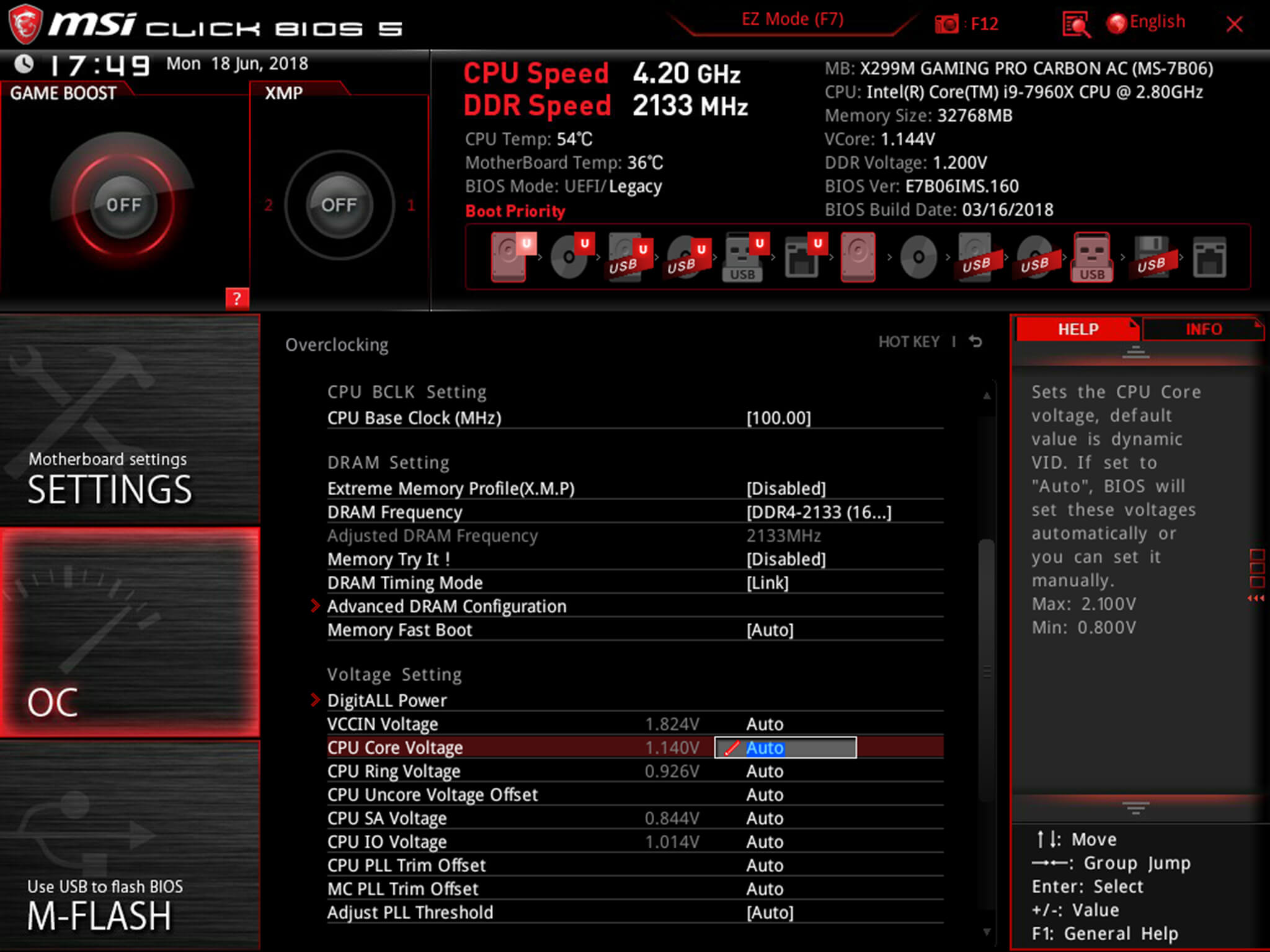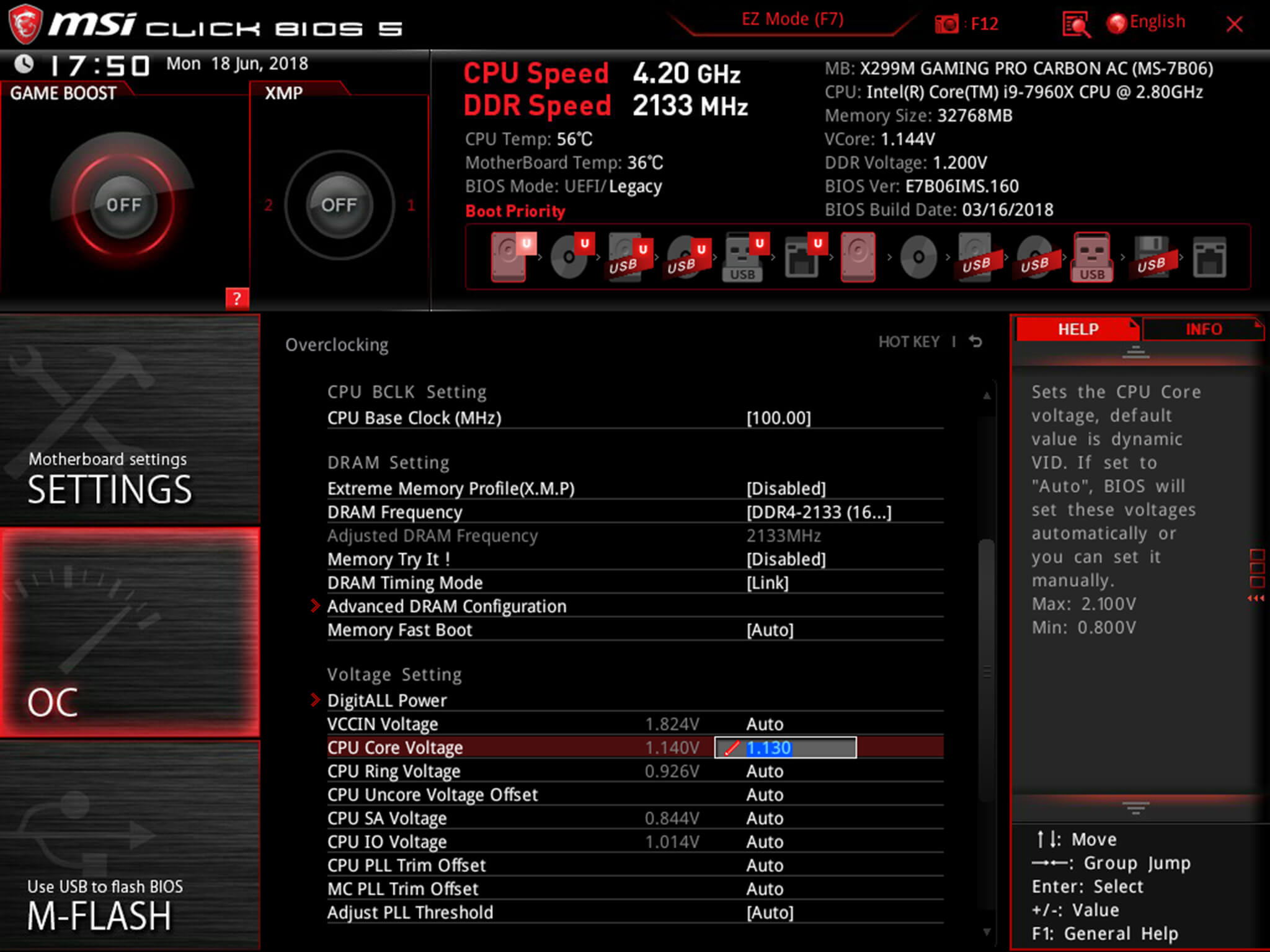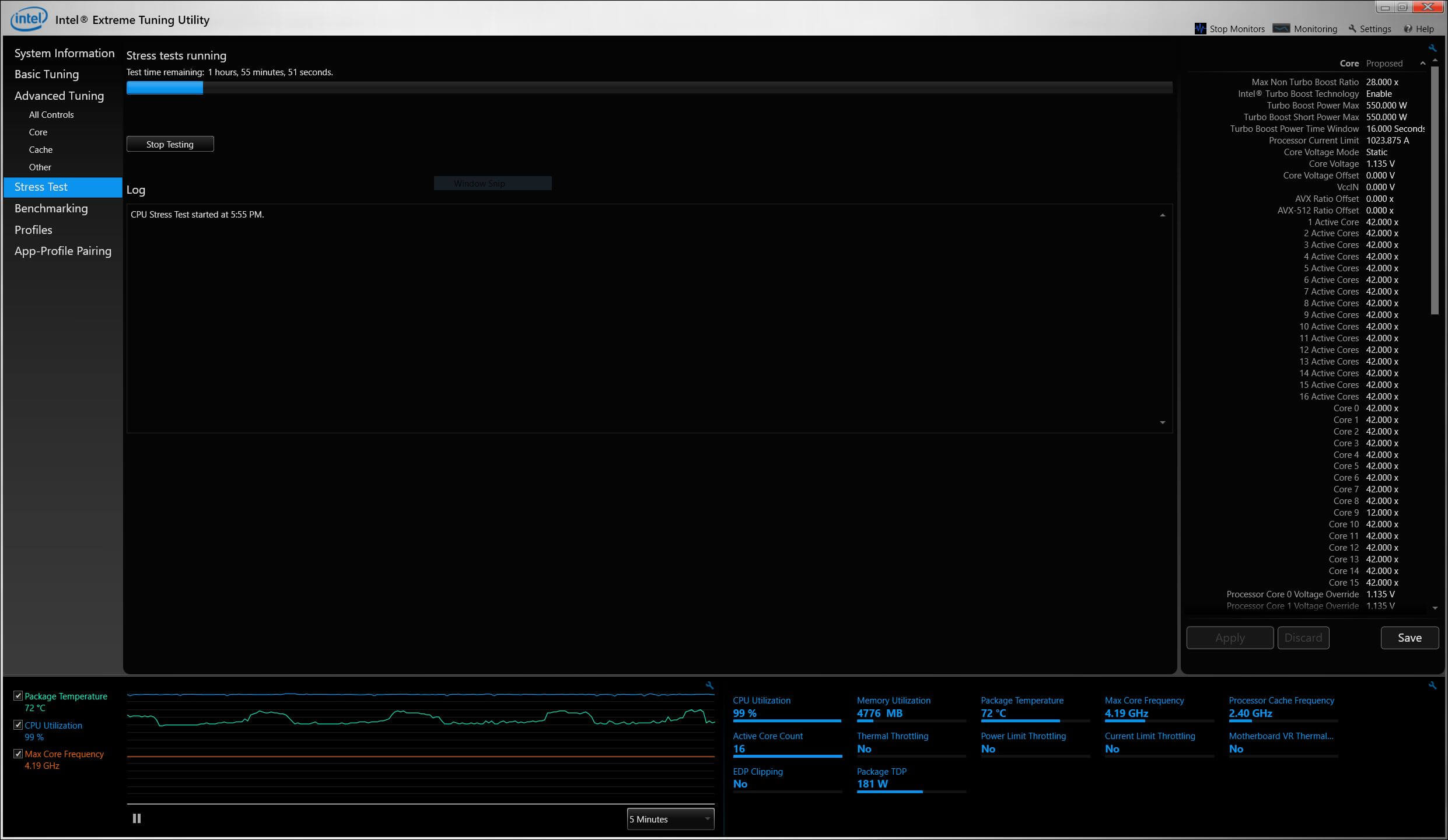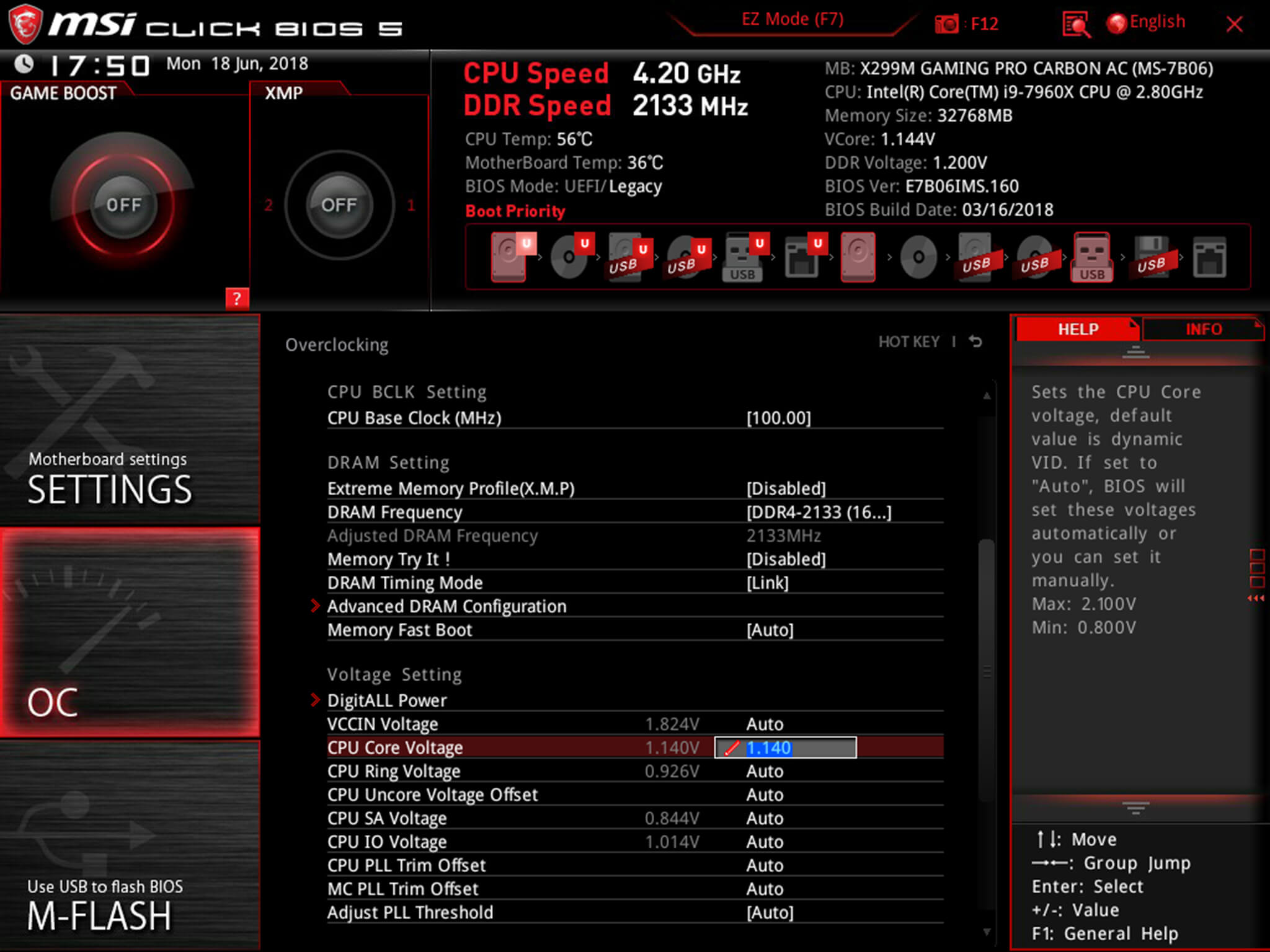【Black Magic Mask (2023)】
Why it matters:Vcore,Black Magic Mask (2023) or core voltage, is the voltage that is supplied to power your CPU. The amount of power the CPU uses and the amount of heat generated are tied to the amount of voltage it draws. The voltage identification definition, or VID, determines the amount of voltage your CPU needs to maintain stability at the default clock speeds.
The core voltage is different for each processor model, and while all CPUs of the same model have the same VID, not all samples maintain stability at the same clock speeds and Vcore due to slight variations in silicon quality. Every sample of the same CPU model is tested to maintain stability at the default speeds and the VID determined by the manufacturer.
Core voltage typically maintains a constant value while your CPU is in use; however, sometimes under heavy workloads vcore can fluctuate. This is known as Vdroop and can be corrected with load-line calibration. This applies additional voltage as load increases to maintain your CPU's stability.
Vcore and Overclocking
When it comes to overclocking, you can only push your CPU's frequency so far before your CPU starts to experience instability. Programs might begin to crash or hang up, game performance could suffer or your computer could even fail to boot. This is because your processor isn't getting enough voltage to maintain system stability.
Increasing voltage will allow you to dial in the perfect overclock.
To adjust the voltage, you'll need to boot into your motherboard's BIOS and make adjustments there. The Vcore is expressed as a three decimal value, such as 1.235v. By default, the voltage control is set to auto; this can be overridden by typing in any value. Make sure not to exceed the recommended maximum for your processor.

Before fine-tuning the Vcore, it's important to find a good baseline value for a given speed. This varies from model to model but it can be helpful to read reviews for your CPU, specifically ones that focus on overclocking.
Most publications will list the voltage they required to keep several different speeds stable. Every CPU sample is different and you will need to fine-tune the voltage before calling it done; however, these values do provide a good starting point.

If you boot your machine and don't find any stability issues, then you know it's time to start decreasing the voltage. When overclocking, you want to find the lowest voltage required to maintain stability. More voltage equals more heat and this will allow you to keep temperatures under control.

The safest way to adjust voltage is with increments of .01 volts. Decrease voltage until your computer starts showing signs of instability under load. Use a program like Intel's Extreme Tuning Utility (XTU) or Prime95 to stress test your processor.
If the test fails or crashes, then you need to raise the voltage back up to the previous stable point. For optimal efficiency, you can increase the voltage by .005 instead and again test for stability.

Conversely, if your overclock isn't stable at your baseline voltage, you will then need to increase the voltage until your computer shows no adverse effects and then decrease in increments of .005 to fine tune.

Undervolting
Overclocking is not the only time it can be useful to adjust voltage. As mentioned, higher voltage levels cause your CPU to generate more heat, regardless of frequency. Some CPU samples may have a higher VID than is actually required at the default frequency. Undervolting your processor allows your to maintain stability while decreasing temperatures and extending the life of your processor.
It's a common misconception that disabling Turbo Boost is a more effective substitute for shedding heat. While this does result in decreased temperatures, it is not an alternative as the purpose of undervolting is to maintain the same level of performance while generating less heat. When making adjustments, the same principles apply here as with overclocking, decrease Vcore in increments of .01 and then fine tune with adjustments of .005.
Further Reading
- Top 5 CPUs for Gaming
- How We Test: CPU Gaming Benchmarks
- The Best CPU Coolers 2018
Search
Categories
Latest Posts
Whale Vomit Episode 5: Startup Monarchy
2025-06-26 14:33Best Ninja deals
2025-06-26 14:11Stephen King posts yet another cryptic Dark Tower hint
2025-06-26 12:50Best charger deal: Get the Anker 735 charger for just $30 at Amazon
2025-06-26 12:34The Mismeasure of Media
2025-06-26 12:05Popular Posts
How to unblock Xnxx for free
2025-06-26 14:32The 35 best limited series to binge
2025-06-26 14:04Wordle today: The answer and hints for August 17
2025-06-26 13:36Switch 2 Nintendo Direct: Everything announced
2025-06-26 12:18Featured Posts
Connecticut Sun vs. Atlanta Dream 2024 livestream: Watch live WNBA
2025-06-26 13:52NYT Strands hints, answers for August 17
2025-06-26 13:41Shop the best robot vacuum deals the week of August 19
2025-06-26 13:18Dyson V8 Plus cordless vacuum: $120 off at Amazon
2025-06-26 12:40Popular Articles
Here are the glorious proposed logos for Donald Trump's Space Force
2025-06-26 13:50It's International VPN day — shop the best deals
2025-06-26 13:30Apple to start manufacturing iPhone Pro in India, report claims
2025-06-26 13:08Newsletter
Subscribe to our newsletter for the latest updates.
Comments (1533)
Star Sky Information Network
What cracked the Milky Way's giant cosmic bone? Scientists think they know.
2025-06-26 14:35Prosperous Times Information Network
Best Buy's Microsoft three
2025-06-26 14:04Transmission Information Network
TikTok crowns 'Million Dollar Baby' its song of the summer: See the full list
2025-06-26 13:16Happy Information Network
Packers vs. Broncos livestream: How to watch the NFL preseason for free
2025-06-26 12:44Future Information Network
Best keyboard deals: Save on Asus gaming keyboards at Amazon
2025-06-26 12:11